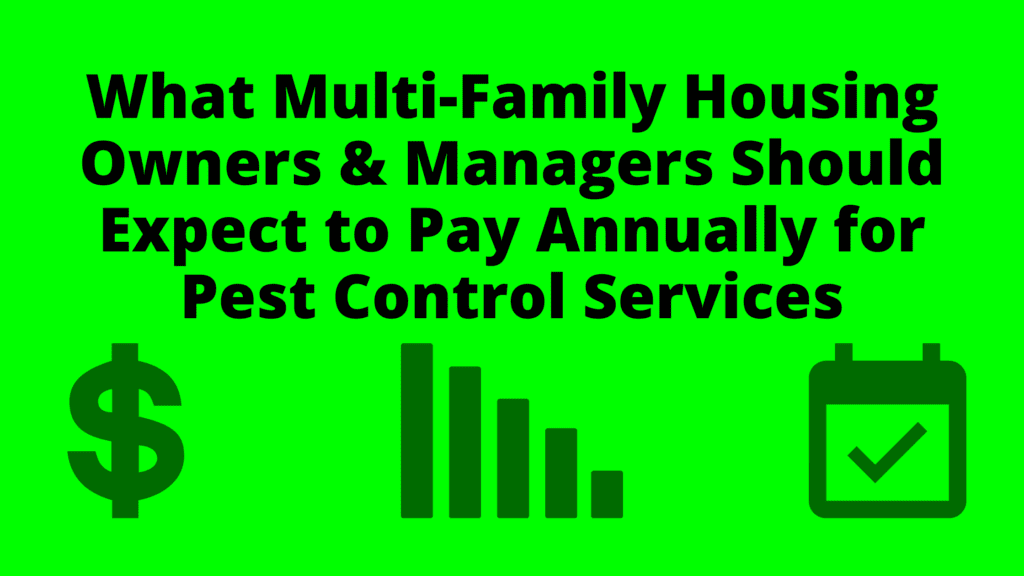Have you ever felt like you were getting ripped off when it comes to pest control? You’re not alone. But, there is a difference in pest control plans. Learn all about traditional verses Integrated Pest Management approaches and successes here. Learn what to pay for pest control services.
In this guide on what multi-family housing owners and managers should expect to pay for pest control, learn a thorough examination of the threat of pests and property damage, including studies and their findings; the decision makers when it comes to maintenance costs and pest control contracts; average maintenance costs; how inspection and prevention go hand-in-hand; what property managers should pay for pest control, including studies and their findings; the importance of effective pest control plans in low-income housing complexes, including studies and their findings; what we charge for pest control; our conclusion; and of course all sources that feed this guide.
For the best multi-family housing pest control services and apartment pest control services, contact Done Right Pest Solutions to schedule a free walkthrough of your property: 651-342-9489.
Table of Contents
- The Threat of Pests
- The Decision Makers
- Average Maintenance Costs
- Inspection & Prevention Go Hand-in-Hand
- What Property Managers Should Pay for Pest Control
- Importance of Effective Pest Control Plans in Low-Income Housing Complexes
- What We Charge for Pest Control
- Conclusion
- Sources
The Threat of Pests
Study 1: Mice
Tenants who have been surveyed in Baltimore, Maryland; Gary, Indiana; and New York urban areas experienced great distress when it comes to mice alone. In New York over 18% experienced mice bites in their homes.
This same study shows case studies of multiple low-income housing properties and their response to pest control, their ratings of their pest control team. The studies relayed the results of this study of 2 buildings containing the same number of units, same shape of building, same style and build of building, and even the units were of similar sizes throughout.
The study was conducted along with the extermination of the mice for a 10 week period. The pest control team performed a 6 month follow-up and a 12 month follow-up. It is important to note that poor sanitation or excessive clutter was not related to the presence of house mice when considering sanitation only. This was found and re-affirmed during this study. Mice are present in apartment buildings regardless of cleanliness.
Finally, it has been proven time and time again the importance of teamwork in eradicating pests. “However, long-term (i.e., sustainable) house mouse control requires employing multiple control methods, including the use of several rodenticide baits with different characteristics to manage house mouse activity along with other critically important tactics such as exclusion and trash management.” (Sked, Abbar, Cooper, Corrigan, Pan, Ranabhat, Wang. 2021)

With mice, rats, fleas, cockroaches, and other pests also spreading illness and disease, how important is it for landlords and property managers to have preventative and reactive pest control in place? Very.
Bed bugs often cause distress and can cause delusionary parisitosis, a mental condition where a person continues to think they have bugs in their home and on their person though they have been eradicated.
Study 2: Bed Bugs
Tenants who have been surveyed in the Indianapolis, Indiana area have found some shocking evidence. A high-rise building, 15 stories tall, with 223 1-bedroom apartments were routinely inspected for bed bugs, insect traps were placed to be able to confirm bed bug psychology and etymology, and the tenants and landlords were interviewed.
The study showed what we already know: visual inspection is not enough with confirmed presence of bed bugs. Over 50% of tenants with bed bug activity in their apartments were not aware of the activity (it was only at night, primarily in the walls, etc.).
The study confirmed more of what we already know: bed bugs travel easily to adjacent rooms through wall voids and across the hallways. Bed bugs also travel through halls.
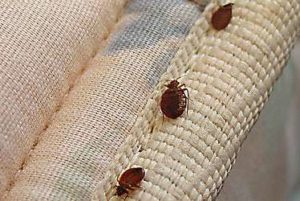
The implications of the study, while conducted in Indiana, apply globally:
- Understanding the basic ecology and behavior of bed bugs can help direct management practices and will significantly impact success;
- Property managers and pest management professionals must adopt building-wide bed bug monitoring and treatment programs. Simultaneous treatment will reduce bed bug dispersal and help achieve building-wide bed bug elimination;
- More aggressive education of the clients and proactive monitoring are necessary to prevent new infestations, detect bed bug infestations in their early stage, and reduce the spread of bed bugs within and between communities;
- Without changing current control practices, bed bug infestations may continue to spread in our society and likely will become much more widespread in low-income housing in the years to come. (Wang, Saltzmann, Chin, Bennett, Gibb. 2010)
Finally, pests cause damage. It’s as simple as that. It’s the same reason why some are less respectful than others when it comes to living somewhere they don’t own. There is sometimes no sense of pride in their living space. Pests have no pride in someone else’s living space.
Property Damage
Take for example, mice: they leave droppings and urine wherever they go. It is uncleanly, though part of their biological makeup. Mice are destructive to the health of a tenant and apartment complex as a whole.
The teeth of mice and rats never stop growing throughout their lives, so they chew and gnaw on furniture, walls, wiring, anything to keep their teeth down to a normal size. This alone can cause thousands of dollars in repairs for a property manager or owner.
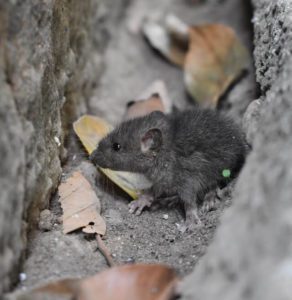
Take for example, cockroaches: they leave their fecal material, casings and skins throughout the home. They leave illness and disease causing pathogens on whatever surface they touch.
In the aftermath of large cockroach infestations, walls have had to be torn down and rebuilt, cabinetry replaced, baseboards replaced, and dead bugs and casings cleaned up. This causes a lot of extra work, time, and money for the property manager or owner.
If cockroach activity is determined early on by a pest control team, none of this extra work is needed because there would be no large infestation and therefore no results of a large infestation.
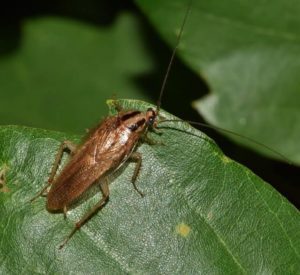
Take for example, bed bugs: they leave their fecal material, casings and skins throughout the bedroom for sure, but often in other rooms too. Their fecal material is often deposited on bed frames and mattresses, and furniture like couches and chairs.
Destruction of property like this leads to additional and unneeded expenses such as replacing said property. Deep cleanings are often needed and at times replacement of some baseboards.
There is a great study done by Pest Control Technology about the importance of Integrated Pest Management (IPM) in apartment complexes. This study reviews mouse control, cockroach control, and bed bug control measures. If you’d like you can read the entire study, but the main takeaway is this:
“While pest management faces many challenges in low-income communities, most roach infestations (85%) were able to be eliminated by adopting a community-wide IPM program in a 7-month period in our study. The majority of the cockroach populations (97%) were eliminated after just four visits. Follow-up monitoring is critical in confirming elimination success.”
Imagine what a quality pest control company such as Done Right Pest Solutions can do in 1 years’ time. We have developed a proactive approach to IPM that has helped dozens apartment complexes within the Minneapolis–Saint Paul metro area and beyond, is currently helping several dozen apartment complexes regain control of their properties from pests, and will continue to help many, many more apartments improve quality of life and beyond. More on this later.
Take for example, carpenter ants: they are destructive pests that build with wood from structures. Carpenter ants and termites devastate tens of thousands of homes and businesses every year.
Some home owners spend between $5,000 and $20,000 on repairs needed from termite or carpenter ant activity. In this case study, one such home was in Grand Rapids, Minnesota.
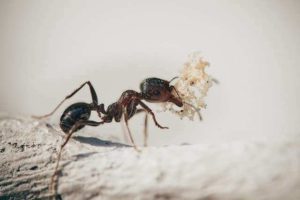
The Decision Makers
In multi-family housing complexes, the property manager, and sometimes the property owner, has the final say. Property managers must be educated in pest management and have high-level skills of communication among all parties involved: tenants, pest control technicians and company, management, maintenance staff, additional contractors that may be needed for repairs, etc.
Property managers need to be aware of all needs at hand and ask questions to the pest control companies to figure out if they treat every need at hand. If a property has a squirrel problem and 1 company will treat squirrels and everything else, but another company does not treat squirrels but can treat every other pest at a lesser rate, these are the things to think about. Affordability, ability to treat all pest needs, timing, and compassion, are a few things that may matter to your company.
- Affordability: what is the cost-effectiveness of the treatments and year-round service options?
- Ability to treat all pest needs: what is the company’s success rate with hard-to-treat pests? Are there certain technicians that aren’t licensed for certain pests, and would that leave you in a bad situation if not every pest could be treated at each time of service?
- Timing: what is the company’s schedule like? Are they responsive in completing a lookover for bid or inspection for your property? Are they on top of getting back to you in a timely matter? Do they have a proactive program set in place to provide you with a customizable ability to meet your needs? Do they follow through, be present at each and every appointment for you, their customer?
- Compassion: most of pest control is communication between management and tenants. Every person needs to be in the loop and play a part in pest eradication. It all matters: from scheduling appointments for pest control to notifying management of a building that a tenant noticed pest activity, to the service that kills the pests.
- Read more of how Done Right’s expert technicians are committed to every pest control job they complete.
Average Maintenance Costs
There are several fixed maintenance costs associated with rental properties and apartment complexes. Among these are: property taxes, electricity, pest control, waste management services, insurance, property management fees, routine maintenance, and more.
You can’t change the price of property taxes, the electric company sets the price of electricity, waste management is waste management, pest control is pest control, etc. While many vendors like electric companies, pest control companies, waste management services, insurance companies, etc. are different, you can bid for multiple quotes and take the best quote with the most comprehensive service to fit your needs
Pest control should be considered an average necessity. Pests cause anxiety, stress, illness and disease, and they can create hardship over time. Courts often side with residents over companies and it ends up being more hassle and stress than just taking responsibility and fixing whatever is going on.
In nearly every state the landlord is required to maintain a certain standard of living. Minnesota doesn’t have specific laws requiring landlords to pay for pest control, but it varies state by state. The EPA greatly recommends employing a type of pest control into your property management plan.
Buglord recommends, “In Minnesota, it’s implied that pest control is the landlord’s responsibility, because this would fall under being fit for use. But since it is not explicit, make sure to check your lease and discuss it with your landlord.”
Here is a copy of Minnesota’s state statutes as it applies to landlords and renters.
And like utility companies that charge a base price and then a per usage fee, pest control prices can be like that, especially if you are on a yearly plan. Read on more below under the section “What We Charge for Pest Control.”
Pest control is best paired with an effective maintenance staff that monitor and eliminate moisture issues throughout the building. Leaky pipes can be an attractant to many invasive pests, like cockroaches and mice. Mice mainly enter in through the foundation of a structure. This is another reason why maintenance is key to pest eradication. Any hole one-fourth of an inch in diameter must be repaired to make sure mice cannot get in and out.
As mentioned previously, teamwork is key with pest eradication. Tenants must work with the pest control technicians, and in turn they may inquire any questions they have regarding their unit to their pest control technician. Tenants must keep their units to a level of cleanliness. This will speed up the process of pest eradication.
Inspection & Prevention Go Hand-in-Hand
When it comes to pest control, we always fully inspect first to make sure the issue called in is what is really going on, to make sure there isn’t anything else going on that would need separate treatment or that could inhibit our treatment, and to ensure that we fully treat as needed.
In apartment complexes it is important to make sure surrounding units, entire floors, or the entire building is being treated to eradicate the pest issue of concern. Mice and rats run through the wall voids, so often entire buildings are needed to be treated. It is important to be mindful of each tenant’s concerns, but in order to improve the success rate and the immediacy thereof, it is important to get into every unit.
Likewise, if a property has a maintenance staff that could inspect for pest issues regularly, that would be appreciated too, though it is important to use a licensed pest control technician for inspection because they know what to look for.
That article also even gives “10 Reasons Why Pest Control Fails in Apartments” and among the 10 reasons are some key items: Not getting into every apartment; Not identifying and treating “focus units”; Not rescheduling problem apartments or units that missed service; Poor cooperation from residents or property managers; And not keeping good records (property and contractor).
Teamwork is the only way to ensure success of pest control treatments at apartment complexes. We need each other. We are stronger together. Tenants and landlords can and should both be on the lookout for pests.
When it comes to mice and apartment buildings, maintenance costs are wasted if the foundation and entry points are not repaired. You will not be able to eradicate mice without eliminating the entry points. You can bait and trap to your heart’s content and then some and the mice will come and go, new will come in, through the entry points.
Community Associations Institute understands this fact, and any multi-unit dwelling, whether apartment building, condominium association, or townhome development, will need preventative and reactive pest control at some point. This includes foundational inspection and maintenance for rodent control and prevention.
What Property Managers Should Pay for Pest Control
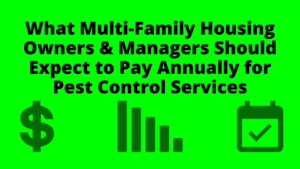
Home Union explains 4 different ways property managers could break down the different ways to calculate what funds to set aside for maintenance like pest control and other expenses.
- The 50% Rule. Just as this rule states: 50% goes toward paychecks, savings, etc. and the other 50% goes toward all maintenance needs.
- The 1% Rule. This rule is to be applied to the total value of the home and expect to pay at least that amount in home maintenance per year. This one is for homes only, not apartment complexes.
- Square Footage Formula. Expect to pay $1 per square foot for maintenance. This can work for single-family homes as well as apartment complexes. This is a good indicator of at least how much per unit for pest control as well.
- The 1.5x Rule. This rule states that annual maintenance should be 1.5x the cost of 1 month’s rent. So if you are a property manager charging $1,200 per month for a 1 bedroom 1 bath apartment in Saint Paul, you should expect to pay at least $1,800 per year in maintenance fees for that unit.
- Bonus tip. For good bookkeeping sense, always add contingencies fees, like the lowest amount is a “best case scenario” and you want to plan for a “worst case scenario.” Then at the end of the year, if you don’t end up paying that much, put in in the savings account.
Importance of Effective Pest Control Plans in Low-Income Housing Complexes
A study was published in 2019 detailing the importance of pest control, namely cockroach and bed bug control, in low-income housing complexes. The author noted: “Control failures are often found in public housing, where low-bid contracts are common, and the quality of pest control is poor.” The author later concludes: “Without raising the standard for pest control services, implementation of IPM in low-income communities will continue to be difficult.” (Wang, Eiden, Cooper, Zha, Wang. 2019)
According to the EPA, Integrated Pest Management (IPM) is a pest control approach that includes proper identification, pest monitoring, prevention, adopting treatment thresholds, using multiple control tactics, and monitoring treatment results. Done Right Pest Solutions strives to offer the best, most comprehensive pest control service using an Integrated Pest Management approach.
The study showcased a low-income apartment complex with 992 units. Prior to the study, the current pest control provider charged less than $1 per unit per month for pest control, and as a result spent less than 1 minute per monthly visit in each unit. With low cost pest control, issues don’t get resolved. The findings are more detailed within the study.
Within the study, one of the buildings had 71 units that had cockroaches detected, by 6 months of the IPM approach, infestations were eliminated in 50% of the units identified during the initial inspection. And by 12 months infestations were eliminated in 75% of the units identified during the initial inspection. What is interesting is the alternative IPM pest company used the same products as the previous pest control vendor, but used a more accurate dosage per unit per need, and spent much more time in each unit.
As you can see, anything under $1 per unit per month for pest control will not get you pest eradication results. In 2009, the author of the study estimated that the monthly IPM cost for cockroach management specifically was $7.50 per unit per month, which would have made this property’s cost 7x more than it was, but would have decreased the number of infested units, therefore decreasing the greater need for pest control.
The goal from sharing this study, is that property managers can see the great need for effective inspection, prevention, and early treatment. Inspecting and treating units willy-nilly is not going to help either, as the author states near the end:
“Over the course of the study in the IPM building, 71 units never had cockroaches detected. If these 71 units would be treated monthly, resources (insecticides and labor) would be wasted. Conducting treatments based upon trap count data would save time, achieve better results, and not waste resources; housing authorities would benefit by having these protocols in their contract, so they get results from the services they pay for; residents would have healthier homes, less stress from dealing with infestations, and reduced pesticide exposures.” (Wang, Eiden, Cooper, Zha, Wang. 2019)
Using Done Right Pest Solutions expert technicians with research backed approaches on the most effective pest control measures ensures that over time the infestations will decrease, as will the cost for monthly pest control. We see it every day in our own studies, in our own multi-family housing pest control services.
Don’t just have regular pest control, have effective pest control.
What We Charge for Pest Control
Our one-time services are more expensive in the long term: needing multiple one-time services for different pests throughout the year.
Our pricing matrix has a base price based on:
- the number of buildings/sections
- the number of equipment required by us
- then we cut our typical unit fee down so you have a low fee per unit per weekly/twice monthly/monthly service
- typically a mix-and-match of services, like weekly service for units, monthly service for common areas, and quarterly services for exterior and rodent control and exclusion are most commonly paired
We try our absolute best to keep your prices low!
We also have add on services for:
- exterior seasonal sprays
- mosquito and tick sprays
- squirrel or larger vertebrate services
- bed bug services
- inspection/preventative service for every unit 1x per year
This is our biggest and best guide for multi-family housing pest control, but if you’re interested in some compiled articles of tips and tricks related to commercial pest control, check out this category within our blog.
Conclusion
To conclude, most pests can be very destructive or hazardous to you or your tenants’ health. The most notable pests mentioned that carry illnesses and diseases are mice and cockroaches. It is of utmost importance to have a preventative and reactive pest control plan in place for pest eradication and pest control.
The decision makers when it comes to implementing a pest control company are the property owners or property managers. These decision makers need to be educated and informed of pest control techniques and value. Affordability, ability to treat all pest needs, timing, and compassion were a few aspects mentioned that may be important to your company.
Many aspects of a rental property or apartment building will have costs associated with it: property taxes, electricity, pest control, waste management services, insurance, property management fees, and routine maintenance were mentioned in this article. While some of these items are unchangeable, most will have a base rate and a unit rate that changes based on the units measured.
While each state is different with their laws and statutes regarding landlord/tenant relationships and pest control, landlords are expected to maintain the standard of living they began offering. Pest control may be within that standard depending on the landlord and lease situation. Four tips and a bonus tip were given of different ways to calculate how much a property manager should set aside for annual pest control cost.
We shared an additional study of the importance of effective pest control in low-income housing complexes. In this study you learned that while cheap pest control is still pest control in name, it isn’t effective by any means. Using a pest control company that uses an Integrated Pest Management approach is the key to eradicating pest infestations and then managing entire complexes to ensure minimal pest issues that arise.
Finally, we described our pricing breakdown. At Done Right Pest Solutions, we strive to save you money, and it’s why we advocate for regular pest management services, because we know that preventative pest control is more affordable than reactive pest control. It’s also why we have customizable services fit to meet both your needs and budget.
Call us anytime with questions or to schedule a lookover of your property: 651-342-9489. Start the conversation with us via email: donerightpestsolutions@gmail.com.
We’re here for all of your comprehensive pest control needs, guaranteed.
Done Right Team
Addendum — Results We’ve Seen
In the last 3 years, we’ve seen great results with our program. We’ve consistently taken on buildings of pest control difficulty (properties that have multiple pest issues, like cockroaches and mice, cockroaches and rats, bed bugs and cockroaches, and a few that have had bed bugs, cockroaches, mice, and rats). Within the first 3 to 5 months (depending on property size), we’ve been able to eradicate up to 95% of the infestation and further eradicate that remaining 5% in the few months to come.
Furthermore, we’ve been able to decrease the bill for pest control services on average 50% per infested property (some lower, some higher. The highest we’ve been able to save a company was 68%!).
We consistently take on the hard-to-treat properties. Last year, we took on a property in Saint Paul that 4 other pest control companies turned down due to the high level of bed bug infestations. Our services help remedy entire buildings of their pest issues. We help property managers who want to increase the quality of living for their residents by eradicating these disease and illness carrying and spreading pests.
If you own or manage a property that has some serious pest infestations, there is no better pest control company to call than Done Right Pest Solutions. Our technicians and office staff employ a solid approach backed by follow-up service, effective products, and awesome results. Need more proof? Check out our 5-star Google reviews, where some are from property managers that have witnessed our results first-hand!
Sources
(In chronological order, not alphabetical order)
Sked, Abbar, Cooper, Corrigan, Pan, Ranabhat, Wang. 2021. “Monitoring and Controlling House Mouse, Mus musculus domesticus, Infestations in Low-Income Multi-Family Dwellings”. Animals 11(3). 648: https://doi.org/10.3390/ani11030648
Wang, Saltzmann, Chin, Bennett, Gibb. 2010. “Understanding Bed Bug Infestation and Dispersal Patterns”. Journal of Economic Entomology 103: 172-177. Print.
Ramsay, Hines, Suomi, McDonald. 2006. “Educational Needs Assessment for IPM in Multi-Family and Community Dwellings”. Journal of Pesticide Safety Education Vol. 8 (10-16): https://scholar.lib.vt.edu/ejournals/JPSE/v8/JPSEV8_10-16.pdf
Home Union. https://www.homeunion.com/average-hidden-maintenance-costs-rental-property/
Environmental Protection Agency. https://www.epa.gov/safepestcontrol/pest-control-resources-housing-managers
Buglord. https://buglord.com/pest-control-renter-responsibility/
Minnesota State Statute. https://www.revisor.mn.gov/statutes/cite/504b.161
Pest Control Technology. https://www.pctonline.com/article/carpenter-ant-control/
Pest Control Technology. https://www.pctonline.com/article/community-wide-ipm-roaches-apartments/
Wang, Eiden, Cooper, Zha, Wang. 2019. “Effectiveness of Building-Wide Integrated Pest Management Programs for German Cockroach and Bed Bug in a High-Rise Apartment Building”. Journal of Integrated Pest Management 10 (1): 33 https://academic.oup.com/jipm/article/10/1/33/5625298

